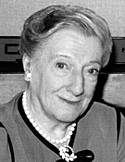Jessmin Howarth

Jessmin Howarth (1892-1984) was a dancer, musician and instructor of Dalcroze Eurhythmics, a close associate of Jeanne de Salzmann. She was born in 1892 in England where she grew up. In 1910 she went to study violin in Dresden at the Dalcroze School in Hellerau, where she also studied dance, pantomime and physical therapy. Afterwards she moved to Paris where she became a choreographer for the Paris Opera and a teacher of Dalcroze eurhythmics and pantomime. Howarth met Gurdjieff in 1922 in Paris shortly after he had arrived there with his group of followers, driven out by the Russian Revolution. She abandoned her career in music and dance to become a follower of Gurdjieff and his teaching, particularly, of the tradition of the Movements, of which she became one of the principal instructors. After Gurdjieff’s death she continued to study with some of his senior pupils, maintaining her close association with Jeanne de Salzmann and with Rose Mary Nott and instructing the Movements in Europe and America until her death in 1984. Jessmin Howarth was the mother of Dushka Howarth, likewise a pupil of Gurdjieff and an instructor of the movements. Together with her daughter, Jessmin Howarth wrote a book of memoirs, titled It’s Up to Ourselves: A Mother, a Daughter, and Gurdjieff, A Joint Memoir,published in 2003 by the Gurdjieff Heritage Society in New York. She also wrote articles, including “Remember Inner Work”, first published in The Gurdjieff Society: Report of the Council to Members in London in April 1996, in which she reviewed the history of Movements in Gurdjieff’s groups and provided insight at some discoveries which could be provided by the practice of the Movements.
Quotes:
“Remember, dear, you don’t have to judge ‘the ideas’ by the people who believe in them.” Jessmin Howarth
“Well! Doesn’t it feel very interesting that Mr. Gurdjieff was not content to just give his system of ideas, but that he also brought a system of “sacred dances,” of “Movements?” And he made it very clear that the study of the ideas and the practice of the Movements were to be complimentary.”
“Certainly, when I first hear of the “teaching” I am interested, uplifted, because I know Mr. G.’s aim was to help us develop consciousness; and this gives us a purpose in life. We realize then, as some of his words have brought to us, that it is quite true: We are asleep in certain ways. We don’t really know what we’re doing … what we are thinking … what we are feeling. We are not aware. We don’t live intentionally.”
“We realise in the movements that we are rarely awake to our own life—inner and outer. We see that we always react in a habitual and conditioned way; we become aware that our three main centres, head, body, feeling, rarely work together or in harmony. We begin to try to move always intentionally—not mechanically—and we discover in ourselves many hitherto unexpected possibilities. We find that one can collect one’s attention; that one can be awake at times and have an overall sensation of oneself; that a quietness of mind, an awareness of body and an interest of feeling can be brought together and that this results in a more complete state of attentiveness in which the life force is felt and one is sensitive to higher influences. Thus, one has a taste of how life can be lived differently.”
Articles:






